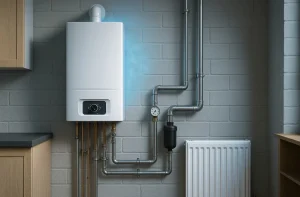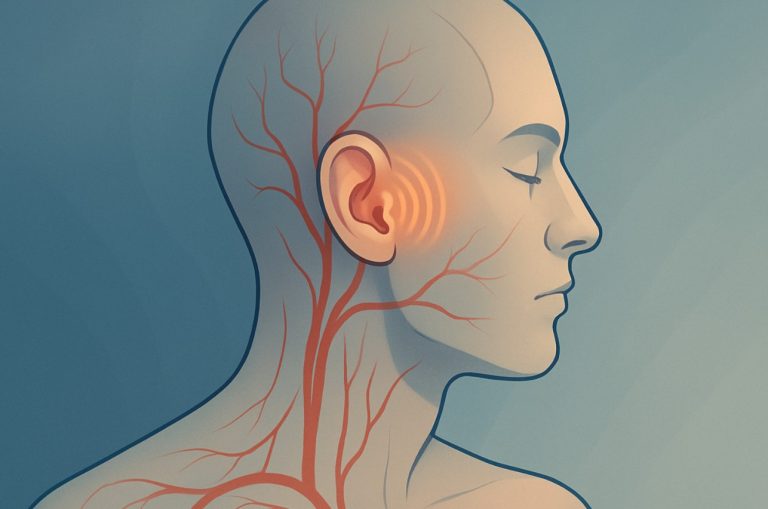Why is carbon monoxide dangerous, and why does it continue to be one of the most feared yet misunderstood household hazards? Despite its lack of colour, smell, or taste, carbon monoxide (CO) can silently infiltrate homes, workplaces, and vehicles, posing a serious threat to life.
The true danger of this gas lies in its invisibility and its biological impact on the body. When inhaled, carbon monoxide displaces oxygen in the bloodstream, effectively suffocating vital organs without any physical warning signs.
In the UK, thousands of people are treated for carbon monoxide poisoning every year, and several deaths are recorded annually due to faulty appliances, poor ventilation, or simple unawareness. Understanding how this gas works, where it comes from, and how to detect it is critical for ensuring long-term safety.
What Is Carbon Monoxide and How Is It Produced?

Carbon monoxide is a colourless, odourless, and tasteless gas formed when carbon-based fuels fail to burn completely. It can come from everyday household items that people often take for granted, such as gas boilers, heaters, wood-burning stoves, and fireplaces.
When these appliances are damaged, incorrectly installed, or used in spaces with inadequate ventilation, they release carbon monoxide into the surrounding air.
Unlike natural gas, which has an artificial odour added to help detection, carbon monoxide gives no sensory warning. This makes it possible for the gas to accumulate to dangerous levels without anyone realising until symptoms begin to appear.
Examples of situations where carbon monoxide may build up include using a barbecue indoors, running a car engine in a closed garage, or lighting a gas fire in a room with a blocked chimney. In these confined conditions, the gas quickly replaces oxygen, turning a familiar environment into a silent trap.
How Does Carbon Monoxide Harm the Human Body?
The science behind carbon monoxide poisoning explains why it is so deadly. Once inhaled, carbon monoxide enters the bloodstream through the lungs and binds to a molecule called haemoglobin. Haemoglobin’s normal role is to transport oxygen to tissues and organs.
However, carbon monoxide binds to haemoglobin approximately 240 times more strongly than oxygen does. This means that even a small amount of carbon monoxide can occupy a large percentage of the body’s oxygen-carrying capacity.
When this happens, a compound called carboxyhaemoglobin forms, preventing oxygen from reaching vital organs such as the brain, heart, and lungs. Over time, cells begin to suffocate due to a lack of oxygen, and organ function deteriorates.
The brain and heart are especially vulnerable because they rely heavily on a steady oxygen supply. Without it, confusion, unconsciousness, and even cardiac arrest can occur. This physiological process explains why exposure to carbon monoxide, even for a short duration, can be fatal.
Why Is Carbon Monoxide Considered a Silent Killer?
Carbon monoxide is known as the silent killer for a reason: it cannot be detected by human senses. People often have no idea they are being poisoned until they start experiencing physical symptoms.
These symptoms may appear mild at first, often resembling a common cold or flu. However, as the body continues to absorb the gas, the effects become increasingly severe.
What makes the situation even more dangerous is the way these symptoms can mislead both victims and doctors. Because the early signs headache, dizziness, nausea, and tiredness are similar to those of viral illnesses, many cases go undiagnosed until significant exposure has occurred.
At higher concentrations, carbon monoxide can cause weakness, confusion, and rapid loss of consciousness. Without immediate intervention, exposure can lead to brain damage, heart failure, or death within minutes.
What Are the Common Signs and Symptoms of Carbon Monoxide Poisoning?

Recognising the symptoms of carbon monoxide poisoning can save lives. However, the symptoms vary depending on how long and how much a person has been exposed to the gas.
Mild exposure may cause a dull headache, fatigue, dizziness, and nausea. As exposure continues, more serious symptoms such as confusion, difficulty breathing, and loss of coordination begin to develop. In severe cases, people may collapse or lose consciousness entirely.
In many reported cases, multiple members of a household experience the same symptoms at the same time, which is a strong indicator of carbon monoxide exposure rather than illness. If symptoms improve when people leave the affected area, that is another important warning sign.
How Quickly Can Carbon Monoxide Become Fatal?
The speed at which carbon monoxide becomes lethal depends on its concentration and the duration of exposure. In high concentrations, it can kill in less than 10 minutes. At lower levels, symptoms may take hours or days to appear, leading to prolonged health effects and even long-term organ damage.
The table below shows the general relationship between exposure levels and health effects:
| CO Concentration (ppm) | Exposure Duration | Likely Symptoms and Effects |
| 50 ppm | 6–8 hours | Headache, fatigue, slight nausea |
| 200 ppm | 2–3 hours | Dizziness, nausea, confusion |
| 400 ppm | 1–2 hours | Severe headache, disorientation |
| 800 ppm | 45 minutes | Collapse, possible death after 2 hours |
| 1600+ ppm | 20 minutes | Loss of consciousness, death within an hour |
Even low-level exposure over a long period can lead to chronic headaches, difficulty concentrating, and memory loss. This is particularly concerning for vulnerable populations such as the elderly, children, and pregnant women.
Who Is Most Vulnerable to Carbon Monoxide Poisoning?
While carbon monoxide poses a threat to everyone, certain groups face greater risks. Pregnant women and unborn babies are especially susceptible because foetal haemoglobin binds carbon monoxide more strongly than adult haemoglobin, reducing oxygen delivery during critical stages of development.
Young children breathe more rapidly and absorb more oxygen relative to their body size, meaning they can suffer the effects of poisoning more quickly.
Older adults and people with pre-existing heart or lung conditions are also more likely to experience severe consequences because their bodies already struggle to distribute oxygen efficiently.
These vulnerabilities make it crucial for households with young, elderly, or unwell members to have functional carbon monoxide detectors installed and maintained.
How Can Carbon Monoxide Leaks Be Detected and Prevented?

Because carbon monoxide cannot be detected through smell, sight, or taste, technology plays the most crucial role in prevention.
Installing carbon monoxide detectors in homes and workplaces is one of the most effective safety measures. These devices constantly monitor air quality and sound an alarm if dangerous levels of CO are detected.
In the UK, safety guidelines recommend placing detectors near sleeping areas and fuel-burning appliances.
They should be tested monthly, with batteries replaced regularly. Annual servicing of boilers, heaters, and chimneys by a Gas Safe registered engineer also prevents leaks caused by wear or damage.
Proper ventilation is another key factor. Flues, chimneys, and vents must be kept clear of obstructions, as blocked airways can cause dangerous gas accumulation.
Finally, portable fuel appliances such as barbecues or generators should never be used indoors or in enclosed spaces such as garages or tents.
What Are the Legal Requirements and Safety Standards in the UK?
The UK has clear legal standards designed to protect residents from carbon monoxide exposure.
Under the Smoke and Carbon Monoxide Alarm (Amendment) Regulations 2022, landlords must install working carbon monoxide alarms in every room containing a fuel-burning appliance. They are also responsible for ensuring alarms remain operational throughout tenancies.
Additionally, all gas installations and servicing work must be carried out by professionals listed on the Gas Safe Register. The Health and Safety Executive (HSE) oversees these regulations and offers guidance on workplace and residential safety.
Public awareness initiatives such as those by CO-Gas Safety and the Gas Safe Charity further educate homeowners about the risks, prevention, and proper maintenance practices that can save lives.
How Does Carbon Monoxide Compare to Other Gases Found in Homes?
The following table highlights how carbon monoxide differs from other common household gases and why it is uniquely hazardous:
| Gas Type | Colour | Odour | Common Sources | Health Risk |
| Carbon Monoxide (CO) | Colourless | Odourless | Fuel-burning appliances, vehicles | Extremely High |
| Methane (Natural Gas) | Colourless | Distinct odour (added artificially) | Gas stoves, leaks | High |
| Radon | Colourless | Odourless | Soil and rocks under homes | Moderate |
| Carbon Dioxide (CO₂) | Colourless | Odourless | Respiration, fire combustion | Low |
Unlike methane, which has a distinctive smell added to help with detection, carbon monoxide provides no sensory clue, making electronic detection systems essential for protection.
What Should You Do If You Suspect Carbon Monoxide Poisoning?
If you suspect that carbon monoxide may be present, immediate action is crucial. Turn off all fuel-burning appliances, open windows and doors to allow fresh air to circulate, and leave the premises immediately. Once in a safe location, call 999 or the National Gas Emergency number (0800 111 999).
Even if symptoms improve after leaving the area, medical assessment is essential. Doctors can perform a carboxyhaemoglobin blood test to confirm exposure.
Treatment usually involves breathing pure oxygen to help the body remove carbon monoxide faster. In severe cases, hyperbaric oxygen therapy may be used to restore oxygen levels and prevent long-term damage.
Conclusion — Why Understanding Carbon Monoxide Can Save Lives?
Carbon monoxide is dangerous because it silently replaces oxygen in the bloodstream, suffocating the body without warning.
Its invisibility and lack of odour make it particularly treacherous, but knowledge and preparation can prevent tragedy. Understanding how the gas forms, how it affects the body, and how to detect it empowers individuals to protect themselves and their loved ones.
Installing alarms, maintaining heating systems, and recognising the signs of exposure are small steps that make a profound difference. In a world full of visible dangers, it is the unseen ones like carbon monoxide that often demand the greatest vigilance.
Frequently Asked Questions
Why is carbon monoxide more dangerous than other gases?
Because it binds to haemoglobin much more strongly than oxygen, carbon monoxide prevents oxygen from reaching the body’s vital organs, effectively suffocating them from within.
Can carbon monoxide poisoning develop slowly over time?
Yes. Continuous exposure to low levels of carbon monoxide can cause chronic symptoms such as fatigue, headaches, and confusion, which may go unnoticed for weeks.
Are carbon monoxide detectors a legal requirement in the UK?
Yes, landlords must install alarms in rooms with fuel-burning appliances, and homeowners are strongly encouraged to have them as well.
How can someone tell if they are being poisoned by carbon monoxide?
Symptoms like headaches, dizziness, or nausea that improve upon leaving the property are key indicators of exposure.
What’s the difference between carbon monoxide and carbon dioxide?
Carbon monoxide is a poisonous gas that disrupts oxygen transport, while carbon dioxide is a normal part of the atmosphere and only harmful in very high concentrations.
Can pets be affected by carbon monoxide?
Yes, pets are often the first to show signs such as lethargy, vomiting, or unsteady movement because their smaller size causes faster absorption.
What immediate steps should you take during a suspected carbon monoxide leak?
Leave the building, ventilate the area if safe to do so, call emergency services, and seek medical attention immediately.






